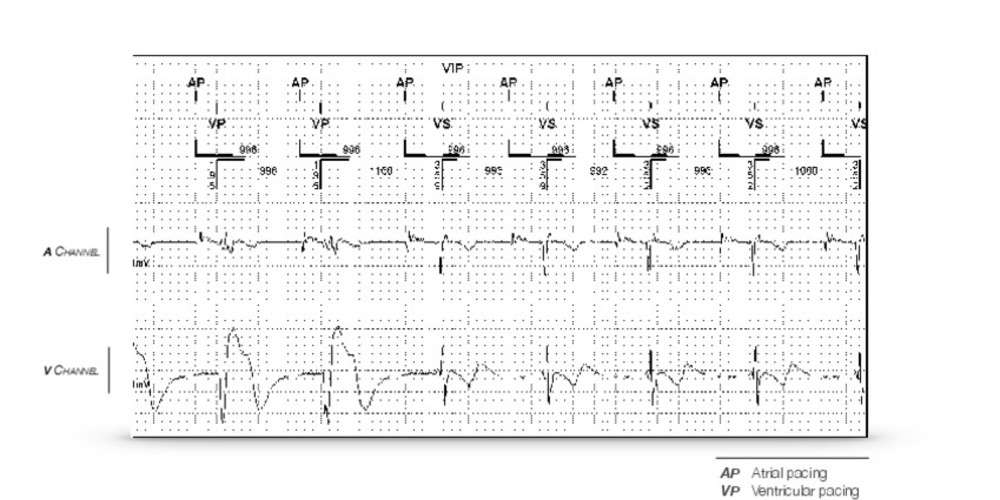pacing in DDD-VIP mode
Tracing
Manufacturer Abbott
Device PM
Field Pacing Modes
N° 10
Patient
74-year-old man implanted with an AccentTM DR pacemaker for sinus dysfunction; programming of the VIP algorithm.

Graph and trace
Initially, atrial pacing and ventricular pacing at the minimum rate; intervention of the VIP algorithm with AV delay hysteresis; resumption of intrinsic conduction and inhibition of ventricular pacing.

Other articles that may be of interest to you







There is extensive literature demonstrating the deleterious effect of prolonged right ventricular pacing. One of the priorities of programming is therefore to minimize any unnecessary ventricular pacing. Different modes or algorithms have been proposed by the manufacturers to reduce the percentage of ventricular pacing without compromising the safety of the patient upon occurrence of an atrioventricular conduction disorder. There is no such specific mode per se for AbbottTM pacemakers. The VIP algorithm corresponds to an AV delay hysteresis. The AV delay is prolonged over a limited number of intervals to promote the return of intrinsic conduction. At the end of the prolonged AV period, if no ventricular event has occurred, ventricular pacing is delivered. On this tracing, the major advantage of this algorithm appears obvious. Indeed, compared to the beginning of the tracing, activation of the VIP allows reducing the percentage of pacing from 100 to 0%. In the long term, this should prove beneficial in terms of ventricular remodeling and occurrence of atrial arrhythmia. Analysis of the percentage of ventricular pacing is therefore an important follow-up element in a patient implanted for sinus dysfunction; it is indeed essential to attempt to minimize the occurrence of any unnecessary pacing. Note that on this tracing, the AP-VS interval is relatively prolonged (around 360 ms on paced atrial activity) although remains shorter than the programmed maximum AV delay during the search (450 ms in this patient).